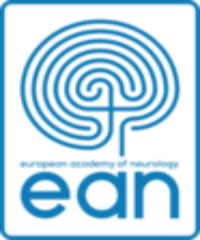
Contact:
Dr. Birgit Kofler
Phone: +43 676 6368930
E-Mail: kofler@bkkommunikation.com
- science
- congress
- health
- medicine
| Pressbox |
Copenhagen (ptp002/29.05.2016/11:45) - Does a person's consciousness disappear immediately when his or her head is cut off or does it linger for a while? The Jomsvikings were so intrigued by this question that they conducted a neurophysiological experiment of sorts: According to an Old Nordic saga, a warrior asked his executioner to let him hold a knife in his outstretched hand while being decapitated. The executioner granted the doomed man his wish. He was beheaded and the knife fell to the ground immediately.
"Research of the nervous system and its diseases has a long and very successful tradition in northern Europe," Prof Ragnar Stien, Norwegian neurologist and author, explained at the Second Congress of the European Academy of Neurology (EAN) in Copenhagen. Prof Stien presented an overview of the history of neurology in the Scandinavian region - from prehistorical evidence to Nobel Prize winning research of the present day.
Prof Stien: "Prehistoric finds show that skulls were being trepanned in Scandinavia 5,000 years ago, in other words, skulls were being opened up to treat brain diseases or for ritualistic reasons." Examinations of skeletons from Viking graves show that northern Europeans of the day were already aware of certain neurological diseases and also attempted to heal them. Numerous sagas likewise mention neurological illnesses and their treatment.
Danish pioneers discover olfactory nerve and lymph system
The Bartholins were a famous Danish family of physicians and medical scholars in the early modern period and go down in neurological history: Caspar Berthelsen Bartholin (1585-1629) wrote one of the most widely read manuals of anatomy and was the first person to describe the olfactory nerve. His son Thomas Bartholin (1616-1680) was considered one of the leading anatomists of his times and discovered the lymphatic system as an independent organ system. One of his pupils, the Danish physician, anatomist and naturalist Nicolaus Stensen or Nicolaus Steno (1638-1686), wrote a "Discourse on the anatomy of the brain" in Paris in 1665, stimulating new studies.
Prof Stien: "Modern neurology developed in the Scandinavian countries in the course of the 19th century out of different medical fields." The departure point was internal medicine in Sweden, electrotherapy in Norway, pathology in Finland and psychiatry in Denmark. Academic chairs were established for clinical neurology in Sweden in 1887, in Norway in 1893, in Finland in 1918, in Denmark in 1934 and in Iceland in 1974.
Famous eponyms for neurological diseases
Scandinavian neurologists, neurophysiologists and biochemists were the first to describe neurological diseases that are well known today and served as their eponyms: Folling's disease was named after the Norwegian Ivar Asbjørn Følling (1888-1973); Wohlfart-Kugelberg-Welander syndrome after the Swedish researchers Erik Klas Hendrik Kugelberg (1913-1983), Gunnar Wohlfart (1910-1961) and Lisa Welander (1909-2001); Refsum syndrome derives its name from the Norwegian neurologist Sigvald Refsum (1907-1991); Krabbe disease from the Dane Knud Haraldsen Krabbe (1885-1961).
Scandinavia has made significant contributions to neuroscience over the last hundred years. Research was mainly focused on cerebral circulation and multiple sclerosis in Denmark; on neuro-genetics and neuropathology in Finland; on neuro-genetics and "slow virus infections" in Iceland; on neuroanatomy and neurophysiology in Norway; and on neuro-pharmacology and movement disorders in Sweden.
Scandinavian Nobel laureates
The high standard achieved in neuroscience in the Scandinavian countries was reflected in several scientists being awarded the Nobel Prize in Physiology or Medicine: In 1967 the Finnish-Swedish researcher Ragnar Granit (1900-1991) received this prestigious award for his study of physiological and chemical vision processes in the eye. In 2000 the Swedish pharmacologist Arvid Carlsson (born 1923) won the prize for his discoveries regarding signal transmission in the nervous system. In 2014 the Nobel Prize Committee bestowed this honor on the Norwegian wife-husband research duo May-Britt Moser (born in 1963) and Edvard Moser (born in 1962). They were singled out for their studies on spatial orientation and spatial memory, with which a psychological function was able to be traced for the first time at a mechanistic level to the function of (individual) neurons.
Source: EAN 2016 Special Session 11-1 Stien R, A short introduction to the history of Scandinavian neurology: from the sagas to the Nobel prizes
(end)
|
 |










